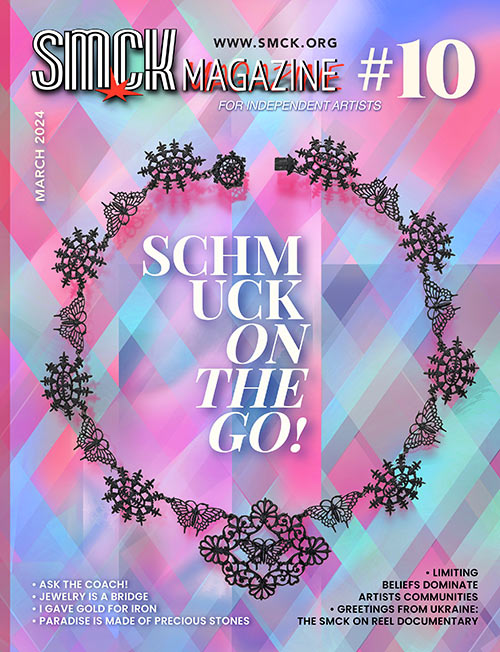SUBJECTIVE OR OBJECTIVE JUDGEMENT?
DANNER TALK EXPERTS EXPLAIN HOW A JURY DECIDES WHO GETS THE PRIZE.
By Christoph Ziegler
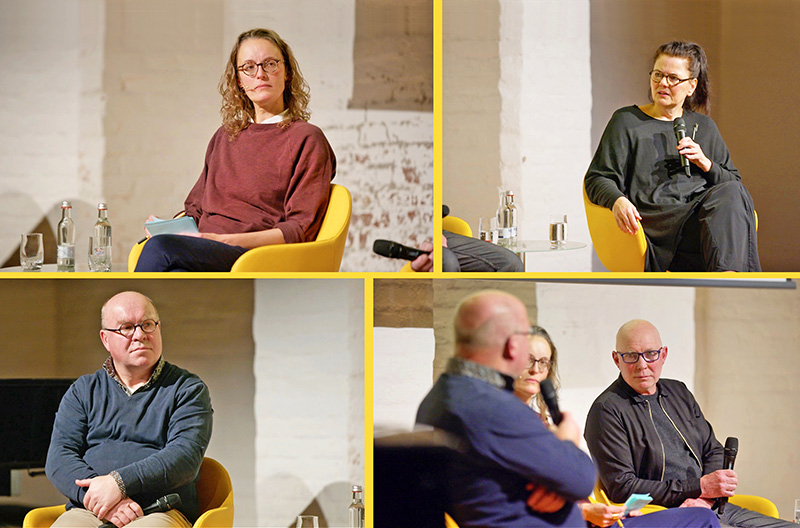 Video still: Danner Talk speakers (clockwise): Julie Metzdorf, Petra Hölscher, Hubert Sanktjohanser and Thomas Stangier.
Video still: Danner Talk speakers (clockwise): Julie Metzdorf, Petra Hölscher, Hubert Sanktjohanser and Thomas Stangier.
Artists and designers are disappointed when they do not receive an award they applied for. Most get over their disappointment easily. But rejected candidates can sometimes feel anger if they don't understand why the winner was more deserving.
By explaining the role quality standards, traditions, originality, writing skills – and, yes, sometimes even the weather – play on a jury's decision, the first Danner Talk that took place in Landshut, Bavaria, on 19 January 2024, was a big step towards educating artists and designers on constructive ways to build a career.
TThe jury's work is frequently considered opaque and the jury itself is viewed as a 'secret congregation'. The so-called silence clause that often applies to jury members reinforces this impression. The question that candidates often ask after the name of the winner is announced is: "Why was that artist awarded the prize: what is so special about their work?"
The jury's composition depends, first of all, on the organizers of the competition who define the criteria for the award and often select the members of the jury. Factors that play a decisive role in the jury's decision process are the number of submissions, the limited time the jury has to make a decision, the place where the jury will meet, and the number of jury members. As Wolfgang Lösche put it: "The weather plays a role." What the former cultural director of Handwerkskammer (Crafts Chamber of Munich and Upper Bavaria) and member of international juries, means is that the decision process is often very complex, rarely easy to anticipate, and does not follow simple formulas.
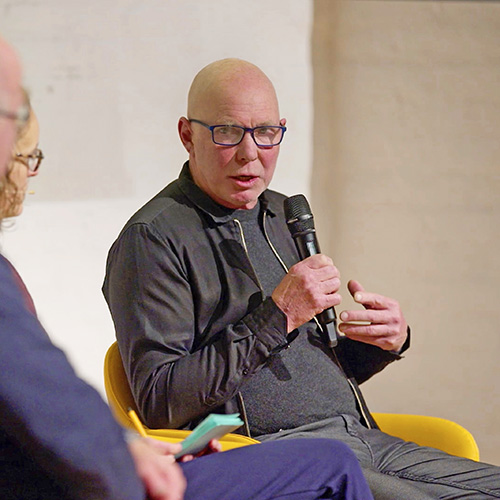
Danner Talk, Hubert Sanktjohanser, video still.
The jury's decision is always the result of intensive discussions and the personal engagement of individual jury members in favor of a specific artist's work. The decision process lies somewhere between subjectivity and objectivity, according to Thomas Stangier, art historian and acting director of Landshut museums, while one cannot really define what is objective. It is more about an "inter-subjective process" that one cannot define through words but leads to a common agreement among jury members.
Furthermore, the jury members' ability to discuss and find consensus depends on whether they share a common cultural background or have different cultural-aesthetical perceptions. These factors should be taken into account during decision-making.
The jury has two main tools at its disposal. First, to perceive the artwork and second, to communicate with each other. "The jury's task is to make a decision by reaching a common level of communication and by finding a common understanding of what is valuable," says furniture designer Hubert Sanktjohanser. Necessary conditions for a jury to be able to apply objective criteria in making a decision are that the members know the subject and are also capable of considering the opinions of other jury members.
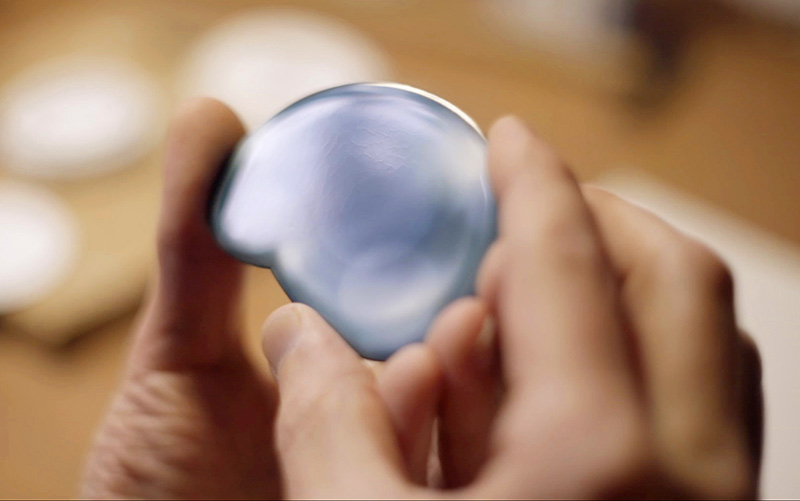 Danner Prize winner Christoph Straube. Video still, © Danner Foundation / bluelake media.
Danner Prize winner Christoph Straube. Video still, © Danner Foundation / bluelake media.
But what are the objective criteria? Of course, there are objective standards that help a jury decide, such as the artist's conscious selection of a material or the artist's technique.
Hubert Sanktjohansers thinks that the jury should always consider the following key words in the selection process: material, construction, aesthetic, and appearance. "When these four parameters build a conclusive unity to which nothing can be added or taken out, then the work is good, the object functions well."
For Thomas Stangier 'aesthetic' is the most decisive factor. "How does a work reflect the cultural tradition and its special techniques and expression forms. And how is this tradition implemented creatively through this work, updated, and projected into the future?"
Every designer and every juror must ask themself this question that is always connected to an intensive confrontation with history, knowledge, experience, and with one's own curiosity for the process of creating art.
What ideas already exist, which concepts have been already realized by other artists? The market, history, literature – and of course the internet – help creatives understand which ideas are already passé and which possibilities have not been explored yet.
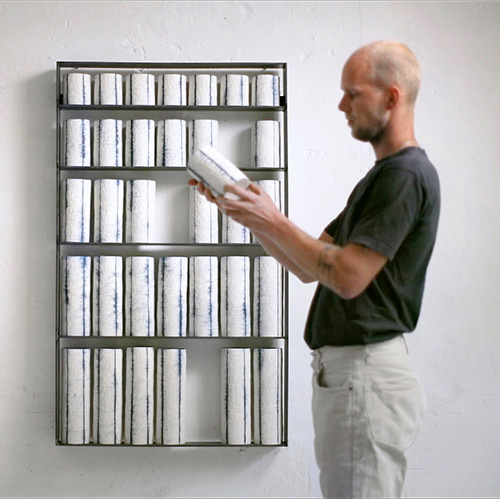
Danner Prize winner Nico Schipp. Video still, © Danner Foundation / bluelake media.
Juries often make a selection from submitted photos. Petra Hölscher, head conservator at the Neue Sammlung/The Design Museum in Munich, believes that the photograph is a deceptive medium because it does not describe the art object adequately due to the missing dimension of space and the missing haptic. On the other hand, a photograph shows how the designer looks at their object.
An Open Call also requires a statement by the designer. Often statements are nicely written but have little or nothing to do with the object in question. Statements that strive to be poetic or have an emotional impact and seek to interpret the object from a personal point of view are mostly rejected. It is easier for the jury to do its work when it has a clear description of the object, an explanation why a specific material has been used, and the designer's reflection on how they came to this form and on how they work.
A professional jury usually honors work that manifests high artistic independence in the use of materials, excellent technique, the ease to create, and the artist's recognizable personal language.
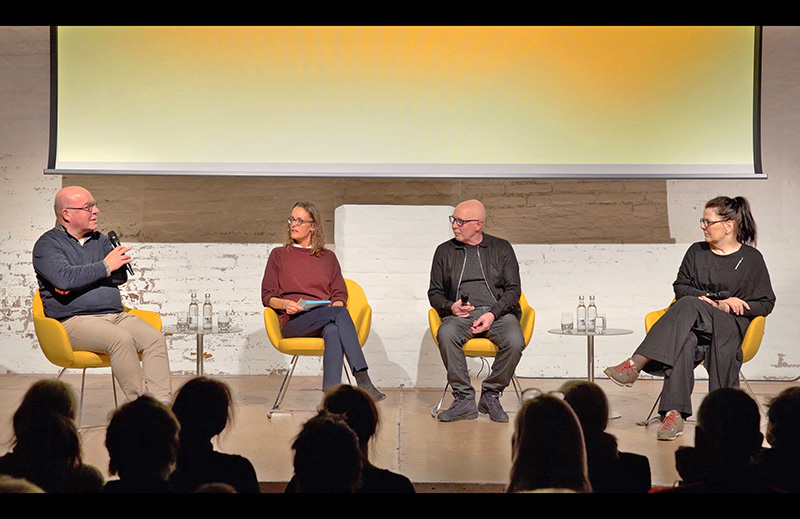 Danner Talk speakers were (left to right): Thomas Stangier, Julie Metzdorf, Hubert Sanktjohanser and Petra Hölscher.
Danner Talk speakers were (left to right): Thomas Stangier, Julie Metzdorf, Hubert Sanktjohanser and Petra Hölscher.
The Danner Talk series offers a platform for discussing substantive issues in applied art, design, and craft. The Danner Talk series aims to support and guide young designers on quality and innovation, and give answers to their questions such as "How do I enter the design market?" or "How do I address galleries?" or How can I become financially independent as a designer?"
The main speakers of the Danner Talk on factors influencing a jury decision were Dr. Markus Eder, Danner Foundation board chairman, and Wolfgang Lösche, former cultural manager of Handwerkskammer. The discussion panel included Thomas Stangier, Petra Hölscher, and Hubert Sanktjohanser, jury members of Danner Awards 2023. Cultural journalist Julie Metzdorf moderated the discussion. The first Danner Talk in Landshut was organized by Simone Nickl.
The prestigious Danner Prize is awarded every three years to artists, designers, and crafters living and working in Bavaria. The first of the Danner Talk series followed the extension of the Danner awardees and nominees show in the neighboring Heiligeistkirche in Landshut. The event has attracted over 15,000 visitors since its opening in November 2023.
LINKS:
www.danner-stiftung.de |
instagram: @dannerstiftung








